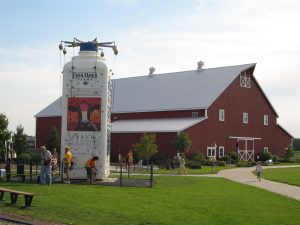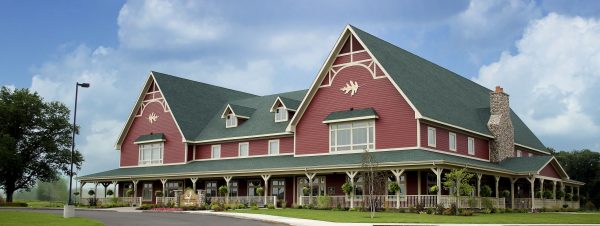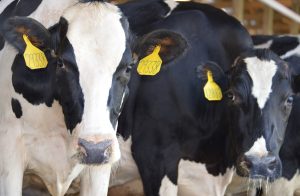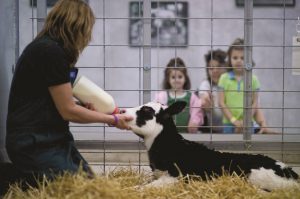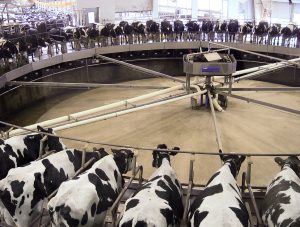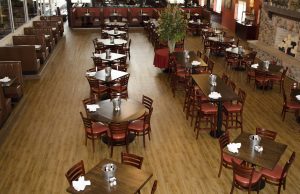In my grandfather’s day, agriculture was often a small, family affair. At the height of his career, it was a ’64 Ford 4,000 pulling a two-bottom plow over fewer than fifty acres of tillable land. Cut into what remained—in elongated pens making use of steep, wooded hillsides or in small, triangular plots tucked in between the creek and the “hollerâ€â€”Granddaddy housed his small army of red-haired durocs. They were the gentile beasts which grew from a swarm of adorably hyperactive, freshly-ringed piglets into the deceptively majestic sows that would feed a nation. Before I was born, he had raised cattle, too, and more than once he shared the stories of his simple mornings trekking to the barn so he could plop himself under the teats in a cold winter morning, filling a common gray pail with that concoction we pour into our cereal.
But today, some ninety years after my grandfather hitched himself to his first team of field horses, “agriculture†means something else…which is okay…because it has to. But even though farming must progress to meet the demands of the post-industrial age, at Fair Oaks Farms, near Roselawn, Indiana travelers can see the modern descendant of that lost time, while touching their fingers on the pulse of the past in the process.
As You Enter
Surrounding the ample parking placed in visible sight of I-65’s Exit 220, the old-world architecture—in the form of a complex of buildings ranging from the farm’s award-winning restaurant to a live birthing center—hearkens visitors back to those days when Bessie’s suds ended up filling a rack of glass containers for their morning ride in an old DIVCO. Waiting for the tour to begin, we meandered among a winding displays laying out basics about cattle, their diet and their lives. In short order, we boarded, rolled out of the lot, and then turned north onto County Road 600 East.
Through the Barn
Because cattle have different bacterial and viral defense systems, human exposure (especially along a heavily traveled corridor such as the Interstate between Indy and Chicago) means that we had to keep ourselves sealed off from the herd. We passed the expansive silage operation, a towering mound of feed carefully prepared and baled waiting under the grey dusk of early winter. Once inside the barn, the tour guide—letting a happy fellow in a pre-recorded breakdown do the talking—navigated the bus through a narrow strip of “road†between the pens. The cows, the same inquisitive creatures I remembered along all my country roadsides growing up, leaned into the bus. They tucked their noses to the edge of the tires’ rubber, but the driver kept the ship steady and nary a nostril was touched. The precision of it all, and the accompanying visual spectacle of hundreds of bovine bodies casually sorting themselves out, picking their own plots to settle in for the night, reminded me of the common bonds we share with other mammals.
All the Little Creatures
Rounding out of the barn we passed a row small, plastic enclosures—looking something like those once-popular doghouse igloos in everyone’s back yards. Here, recently born calves hunkered in their straw beds shouldering the cold. Like all groups, however, some were far from shy. A half-dozen or so peeked their snouts just past their entrance thresholds, their eyes sliding inside their skulls at an even pace with our bus. Still more, another three or four, stepped fully outside, checking us out and craning their necks for glimpse.
Going for a Spin
The best part of the tour for me was the engineering which followed. In the milking room, an enormous wheel—or carousel as they called it—cradled some six-dozen creatures as they rode the slow-moving merry-go-round during the milking process. From start to finish, it covered a span of roughly eight minutes. Hooked up to automatic machines, the farm continually moves cattle in and out of the wheel sending the milk from the carefully sanitized udder to the storage chambers nearby. In the process, the milk is rapidly chilled from its exit temperature of almost 100 degrees to “fridge level†in minutes. As much as the science of the operation impressed me, once again it was the cows themselves I found most captivating. Conditioned largely by habit, they entered the wheel with virtually no human guidance, and when the bumper rail along their backsides gave way at the end of their spin, they peacefully backed off, turned to their left, and disappeared into the barn for their evening meal.
It's More Than a Glimpse
Besides the dairy tour, visitors can check out both a pork and grain experience as well. Paired with post-tour opportunities ranging from a find dinner to the gift shop to Mooville to an often busy calendar full of events, Fair Oaks is fascinating as a spur-of-the-moment stop, but it’s perhaps the greatest fun when planned out as a fully-scheduled day.
After a short visit to see the farm’s newest resident, a calf born only hours before, I returned to my car, turned onto the onramp, and merged into the mechanized thrum of human technology aggressively barreling to Indianapolis. Sitting inside my car’s cabin, enjoying a climate controlled comfort my late grandfather could have only dreamed of when he began his adult life, I realized that Fair Oaks’ charm is less about the wonders of human innovation and more about the endearing spirit of the biological creatures which necessitate it.
